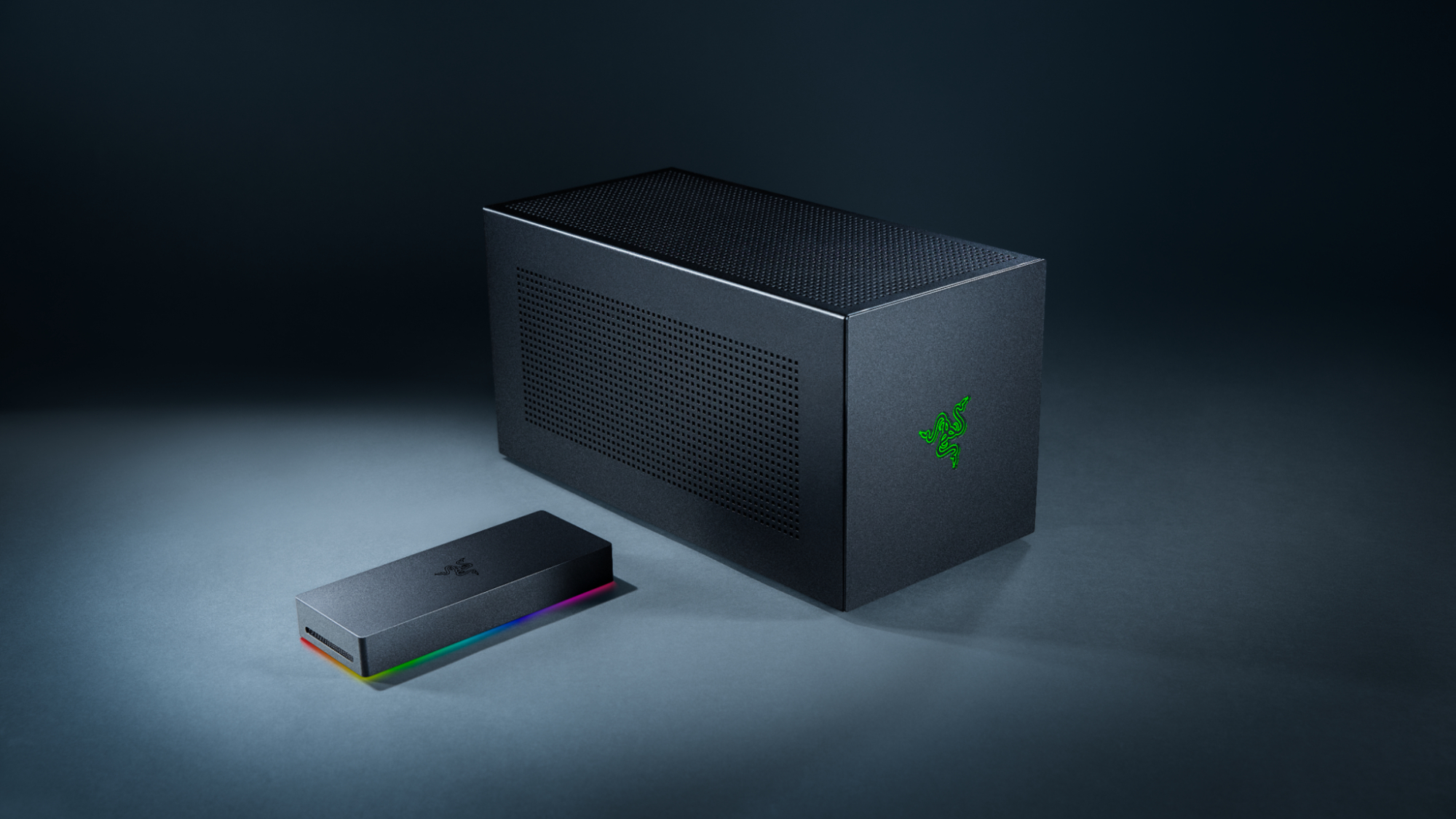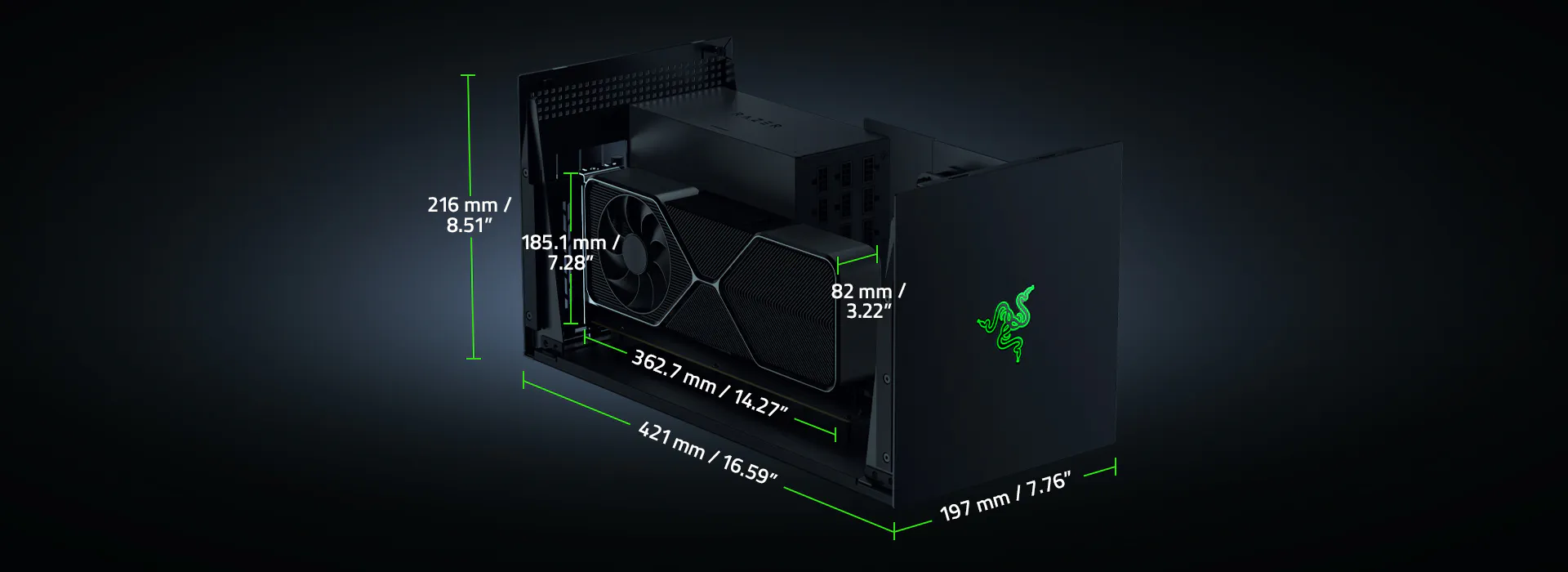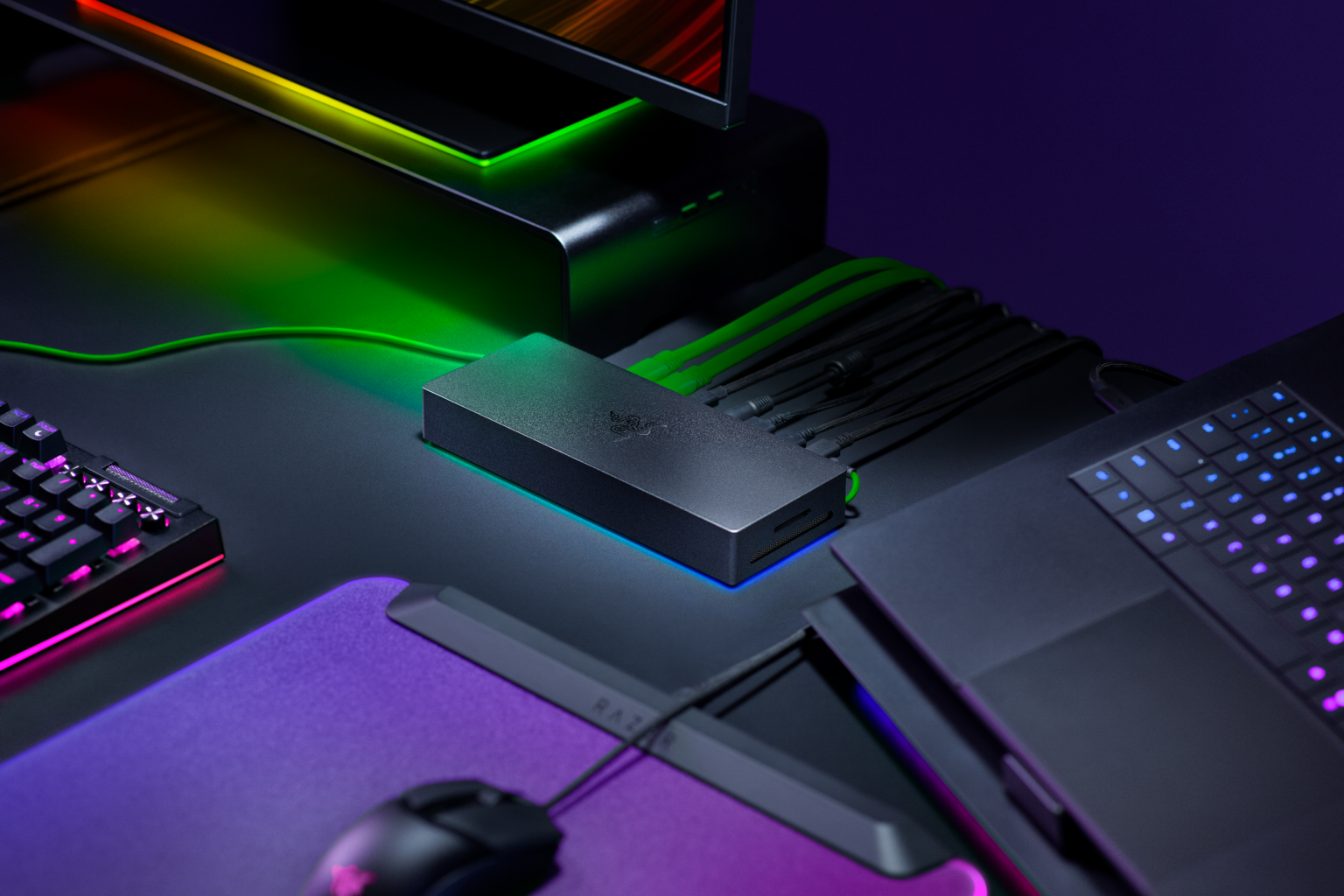Razer unveils Core X V2 eGPU enclosure with TB5 bandwidth — costs $349.99, but no longer has a power supply and I/O expansion requires a separate Thunderbolt 5 Dock

After years of silence in the eGPU space, Razer is back, but not quite with a bang. The company has unveiled the Core X V2, its first Thunderbolt 5 external GPU enclosure, alongside a separate Thunderbolt 5 Dock. On paper, both look like futuristic upgrades to their respective categories. Razer's last enclosure was the Core X Chroma, released six years ago, and it only had Thunderbolt 3 capabilities, so this upgrade was long overdue.
The Razer Core X V2 is a steel eGPU chassis with support for full-size PCIe Gen 4 GPUs, including quad-slot cards from the current RTX 50 and Radeon RX 9000 series. There's a 120mm fan inside to keep things cool. It’s marketed as a plug-and-play solution that brings desktop-class graphics performance to Thunderbolt-enabled laptops and handhelds, but its practicality is more nuanced.
While Thunderbolt 5 promises up to 120Gbps in one direction and 80Gbps bidirectionally, eGPU applications are bottlenecked by the Thunderbolt specification to just PCIe 4.0 x4 speeds, equivalent to 64Gbps. That’s identical to OCuLink—a non-proprietary connector that’s seeing growing traction in the DIY eGPU space for its lower latency and simplicity.

The V2 enclosure itself drops legacy features—there are no USB ports, no Ethernet, and no built-in power supply. Users now have to provide their own ATX PSU, a major shift from previous Core X models that included 650W units out of the box. And while support for 140W of USB PD through the Thunderbolt 5 cable is useful, it doesn't fully offset the inconvenience for users seeking an all-in-one dock-like solution.
Now that Apple Silicon Macs no longer support eGPUs, support for macOS has also been dropped. For now, the Core X V2 is strictly for Windows and handheld PCs that support USB 4, Thunderbolt 4 or 5, though the latter remains rare outside high-end devices.
At $350, it also costs more than the Core X did at launch ($299) while including less—no lighting, no integrated power, and no I/O expansion. Enthusiasts and professionals might question the value, especially when Thunderbolt 5-capable laptops are still a niche, and most already include discrete GPUs.
Razer Thunderbolt 5 Dock
If the Core X V2 seems kind of barebones, it's because Razer wants you to buy the dock separately. Released alongside the eGPU enclosure, the new Thunderbolt 5 Dock aims to consolidate display, data, and storage expansion into a single hub. Razer touts up to 120Gbps burst bandwidth, with the dock delivering up to 140W of system charging via a single Thunderbolt 5 cable.
Get Tom's Hardware's best news and in-depth reviews, straight to your inbox.
It supports 3x 4K 120Hz displays, a UHS-II SD card slot, 10Gbps USB-C and USB-A ports, Gigabit Ethernet, a 3.5mm combo jack, and most notably, an M.2 PCIe Gen 4 SSD slot—a rare inclusion on docks that can serve as a boon for creators and video editors. It also integrates Thunderbolt Share, a KVM-like feature allowing file transfers and peripheral control across two connected PCs.

However, the dock’s pricing is aggressive: the base Mercury White version starts at $389.99, while a Chroma RGB edition will cost $399.99. For a full Thunderbolt 5 setup—dock plus Core X V2, along with a PSU —you're getting scarily close to four digits, and that's without a graphics card or requisite power supply.
Together, the Core X V2 and Thunderbolt 5 Dock split what used to be one product into two... and priced them higher. The Core X Chroma, for instance, offered RGB, 700W power, USB, Ethernet, and GPU support for just $100 more than the V2 alone.
To Razer’s credit, the Thunderbolt 5 spec offers clear technical benefits over TB4, including better multi-display performance, daisy-chaining, and device charging. But that assumes you own or plan to buy a laptop with Thunderbolt 5, a port still largely confined to premium gaming notebooks and mobile workstations.
And therein lies the rub: the very users who’d benefit most from an eGPU box—entry-level laptops, compact PCs, or MacBooks — either lack Thunderbolt 5 or no longer have software support. Meanwhile, high-end laptop users might already have dedicated graphics powerful enough to negate the need for external acceleration.
Razer’s latest gear is sleek, technically sound, and forward-looking. However, in trying to lean fully into Thunderbolt 5, it has forgotten what made earlier Core enclosures appealing—simplicity, self-containment, and practical expansion. In today’s fragmented laptop ecosystem, that might be a gamble too far.
Correction, July 16, 4:40 p.m. ET: The headline originally misstated the price for the Razer Core X v2 eGPU. It starts at $349.99. We regret the error.
Follow Tom's Hardware on Google News to get our up-to-date news, analysis, and reviews in your feeds. Make sure to click the Follow button.

Hassam Nasir is a die-hard hardware enthusiast with years of experience as a tech editor and writer, focusing on detailed CPU comparisons and general hardware news. When he’s not working, you’ll find him bending tubes for his ever-evolving custom water-loop gaming rig or benchmarking the latest CPUs and GPUs just for fun.
-
Notton ReplyMeanwhile, high-end laptop users might already have dedicated graphics powerful enough to negate the need for external acceleration.
The fastest mobile GPU right now is an RTX 5090 24GB. It is a low power GB203 chip which nets performance between that of a desktop 5060Ti and 3080.
So no, there is still a ton of performance left on the table with an eGPU dock. You don't need to stick a desktop 5090 in there, a 5070Ti or 5080 would be plenty of uplift, even with the TB5 120Gbps bandwidth bottleneck.
And it just so happens that Razer sells TB5 equipped laptops.